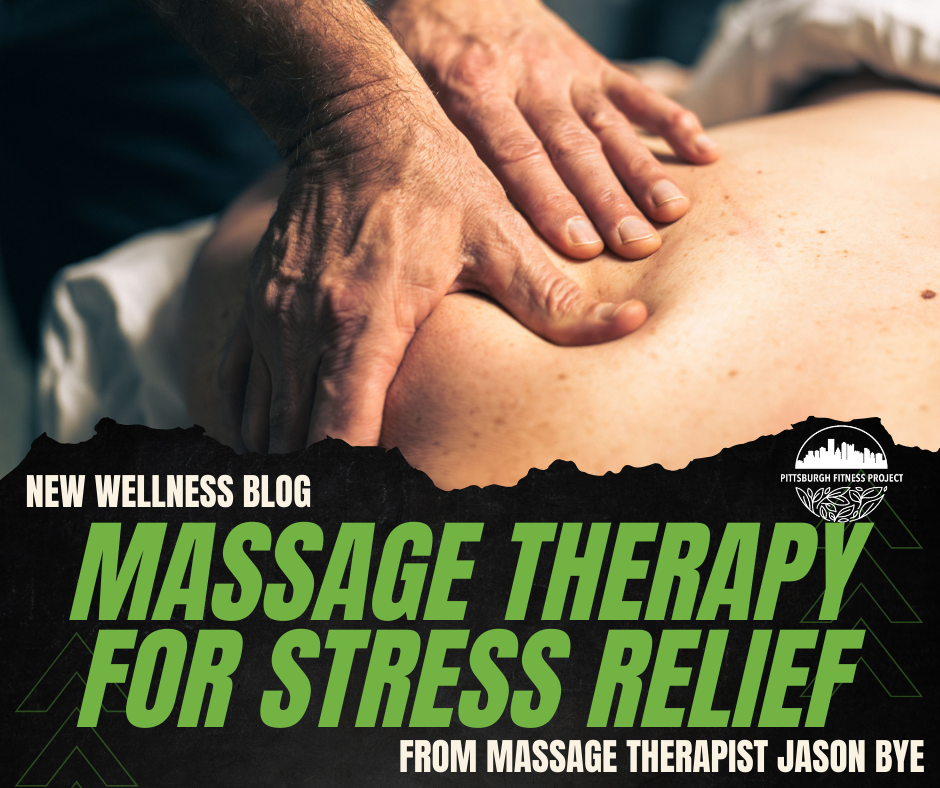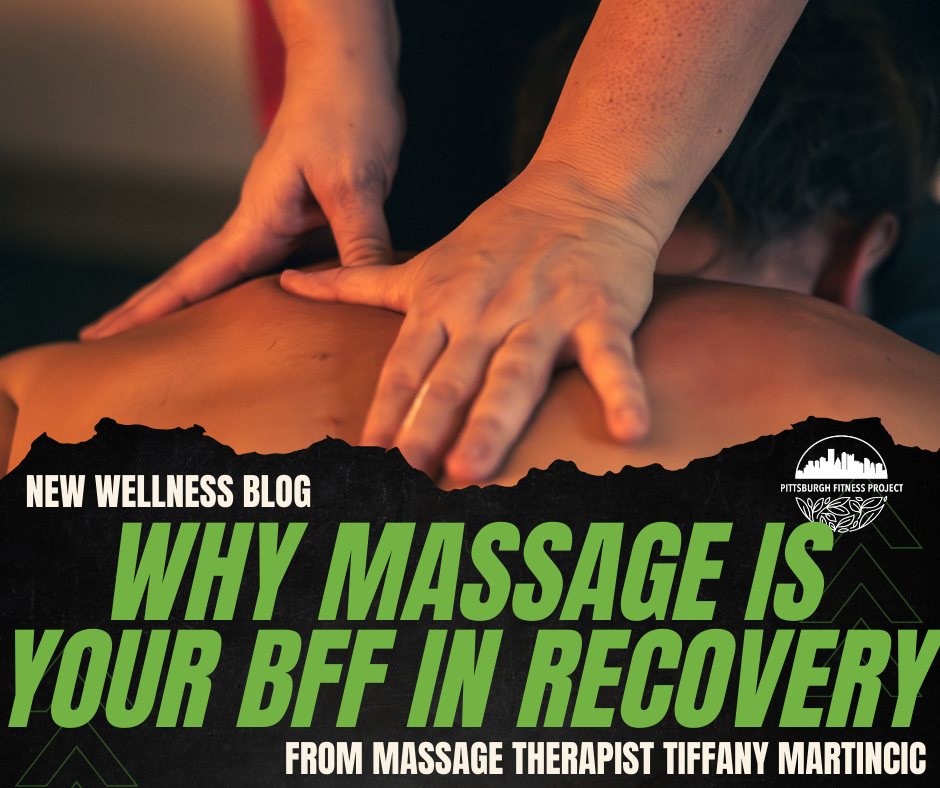
FEELING TRIGGERED? TRIGGER POINTS & MASSAGE
Have you ever heard of trigger points? PFP massage therapist Jason Bye will explain trigger point therapy to help you understand a little of what it is and why it might be good for you.

SHOULD I DO A DIGITAL DETOX?
We’re all guilty of being tied to our phones. These mini-computers keep us informed about the work around us, let us maintain contact with family and friends, and provide entertainment. Other screens like laptops and TVs can also dominate a lot of our time. But when is it too much?

MASSAGE FOR RUNNING RECOVERY
It’s training season for the Pittsburgh Marathon. While most runners will have a plan for their running workouts, most don’t incorporate plans for their recovery. Rest, regular sleep, and proper nutrition all work to improve training and performance. But what about massage? In this blog, let’s look at how massage may help sports performance and running recovery.

SELF-CARE BETWEEN MASSAGES
Self-care is as important as getting a massage or having an exercise/movement routine. Massage Therapist Jason Bye has a recommendation that he offers to a lot of his clients for self-care that you can do at home in between massages. He also uses this for his own self-care.

WHAT IS DRY NEEDLING?
The American Physical Therapy Association defines dry needling as “a skilled technique performed by a physical therapist using filiform needles to penetrate the skin and/or underlying tissues to affect change in the body structures and functions for the evaluation and management of NRM conditions, pain, movement impairments and disability.” It first appeared in research studies in 1947.

MASSAGE THERAPY FOR STRESS RELIEF
Recharging Your Body and Mind
We all need down time. We have been told that taking time for ourselves can be a great benefit to ourselves, but we do not always follow that advice. Massage can help with stress by allowing you the time you need to disconnect from everything else going on in the world or just allowing you some down time. Your massage therapist can be quiet or you can feel free to talk with your massage therapist, please just speak up for what you need or want because this is your time. There some physiological effects that also will benefit you.

MY EXPERIENCE WITH DRY NEEDLING
As a young kid, I hated needles. So, when our new PFP physical therapist, Diana Jordan, DPT, said she also offered dry needling services, I didn’t exactly jump at the idea. However, a sore hamstring muscle from an overly enthusiastic running schedule changed my mind. I wanted to give it a try. Here’s my experience with dry needling.

PHYSICAL THERAPY IS AT PFP
Hi All! I’m Diana Jordan, a Doctor of Physical Therapy (DPT) and newest member of the team at Pittsburgh Fitness Project. I earned my DPT degree from the University of Pittsburgh in 2023 and specialize in orthopedic and pelvic floor physical therapy. I’ve been training and competing in powerlifting and weightlifting for 8+ years and I’m passionate about helping lifters and active individuals feel stronger and more confident during their training.

WHY MASSAGE THERAPY IS YOUR BFF IN RECOVERY
Imagine this: you're lying on a comfy table, relaxing while a skilled therapist works their magic on your tired muscles. Sounds like heaven, right? But here's the thing— massage therapy isn’t just about relaxation (though that's a nice perk). It actually plays a key role in how quickly you bounce back from physical exertion.

SELF-CARE IN FITNESS
We all know the drill: you hit the gym, get super motivated, and then—bam—soreness. After all that squatting, lunging, and running, your body’s like, “What did we do to deserve this?” That’s where massage therapy comes in, the unsung hero of recovery.

UNDERSTANDING THE IMPORTANCE OF RECOVERY
Whether you’re a die-hard athlete or just someone who occasionally jogs to catch the ice cream truck, recovery is key. After all, your body isn’t a machine—it needs time to heal after a workout (or, let's face it, after life). And that’s where massage therapy comes in, a game-changing tool to help your muscles bounce back. Let’s break it down.

JASON’S KEY TO NEW YEAR RESOLUTIONS
Now that the celebration is over and we most likely put on a couple more pounds from a loved one's pies and/or cookies. It might be time to start doing the New Year’s resolution. For Jason, the key to this has been doing something he already loves or figuring out how to love something new.

FEVER IS YOUR FRIEND
Most of us have reached for some Tylenol when we are sick and feel feverish. That makes us more comfortable, but is that the best thing to do?
A recent NPR report about illness and the benefits of raising your body temperature to fight off disease inspired me to write about this common concern – why are we afraid of fevers?
Let’s explore how fever can be your friend.

NEW YEAR, NEW YOU…
It’s that time of the year again when we all collectively agree to pretend that we’re suddenly going to transform into perfect, glowing versions of ourselves in 24 hours. Resolutions are set, gym memberships are activated, and Pinterest boards are filled with dreamy salads and motivational quotes. But by February, it’s usually just us, a bag of cheesy Doritos, and a firm belief that we were "probably too ambitious" in our goals.
Well, this year, let’s ditch the "I’m going to work out every day and eat only kale" approach. Instead, let’s go for bite-sized resolutions—tiny, achievable, totally doable goals that don’t make you want to cry by the end of January. Let’s talk fitness, nutrition, and self-care in ways that won’t make you feel like a failure before the first snow melts.

GIVING A GIFT
It is that time of the year again, where we to buy our love ones a gift for the holidays. Sometimes it can be a struggle to find that perfect gift or we have that one person who seems to have everything. So what do we do for them?

THE GREATEST GIFT
The greatest gift I’ve ever received that didn’t come wrapped in a check would definitely be my coaches! When I first walked into PFP, I was a stay-at-home mom in desperate need of an escape from my own four walls. Enter Gina and Caleb—two wonderful humans who convinced me to get back into fitness after I’d let it all go (you know, thanks to the magic of having babies).

GIFT-GIVING
Last week, we recognized Giving Tuesday. It’s a time around the holidays when we celebrate supporting various causes in our communities and around the world through charitable donations.
But what other ways can we engage in gift-giving? Let’s look at some other ways to give a gift without using monetary means.

THE NUTCRACKER CHRONICLES: WHY BALLERINAS NEED MASSAGE MORE THAN EVER
Ah, the holiday season! Twinkling lights, gingerbread cookies, and the unmistakable sound of Tchaikovsky’s The Nutcracker wafting through the air. For ballerinas, this season brings a flurry of excitement and… well, a bit of a pain in the derrière. Enter the unsung hero of the ballet world: massage therapy. Let’s explore why our dancing divas desperately need those soothing hands during Nutcracker season.

TEAM PFP’S FAVORITE THANKSGIVING RECIPES
Thanksgiving is right around the corner, and while it’s a time to give thanks, let’s be honest—it’s also about the food! We asked our trainers to share their favorite Thanksgiving recipes, and they delivered some delicious classics that are sure to make your holiday table a hit. From perfectly spiced sweet potatoes to tangy cranberry relish and everyone’s favorite pumpkin pie, these dishes are packed with flavor and love. Whether you’re looking for a healthy twist or just a tried-and-true favorite, our trainers’ picks have something for everyone.

TIME TO SLOW DOWN & FEEL BETTER
In today’s fast-paced, always-connected world, the idea of slowing down can feel nearly impossible. We’re living in an age where our nervous systems, built for a simpler, nature-centered existence, are constantly bombarded by information and demands that far exceed what they were designed to handle. As the holidays approach—a season filled with joy but also stress—taking intentional time for yourself isn’t just a luxury; it’s a necessity.
One of the most effective ways to care for yourself and recalibrate your body and mind is through massage therapy. This ancient practice, rooted in the earliest days of humanity, has long been used to ease tension, relieve chronic pain, and bring balance to the nervous system.In today’s fast-paced, always-connected world, the idea of slowing down can feel nearly impossible. We’re living in an age where our nervous systems, built for a simpler, nature-centered existence, are constantly bombarded by information and demands that far exceed what they were designed to handle. As the holidays approach—a season filled with joy but also stress—taking intentional time for yourself isn’t just a luxury; it’s a necessity.
One of the most effective ways to care for yourself and recalibrate your body and mind is through massage therapy. This ancient practice, rooted in the earliest days of humanity, has long been used to ease tension, relieve chronic pain, and bring balance to the nervous system.
